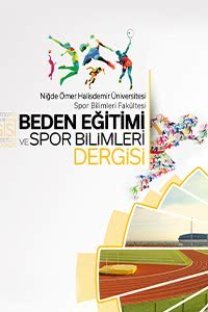The analysis of the creativity and decion making abilitiees of University students according to some variables
Üniversite stranç sporcularının yaratıcılık ve karar verme becerilerinin bazı değişkenler göre incelenmesi
___
- 1. Bagozzi, R. P. & G. R. Foxall (1995). Construct Validity and Generalizability of the Kirton Adaption- Innovation Inventory. European Journal of Personality, 9(3), 185-206.
- 2. Bursalıoğlu, Z. (2005). Theory and Application in Teaching and Education. [Eğitim ve Öğretimde Teori ve uygulama] Ankara: Pegem Publishing
- 3. Calderwood, R., Klein, G. A. ve Crandall, B. W. (1988). Time Pressure, Skill, and Move Quality in Chess. American Journal of Psychology, 101(4), 481- 495.
- 4. Cengizhan, S. (1997). The Evaluation of Creativity Capacities of University Academic Stuff, M.A Thesis [Üniversite Akademik Personelinin Yaratıcılık Kapasitesinin Evrimi, Y.Lisans Tezi] Marmara University, İstanbul.
- 5. Chabris, C.F., Glickman, M.E., “Analysis of a Large Cohort of Competitive Chess Players”, Psychological Science, vol.17,(12),pp. 1040-1046, 2006.
- 6. Charness, N., & Gerchak, Y. (1996). Participation rates and maximal performance: A log-linear explanation for group differences, such as Russian and male dominance in chess. Psychological Science, 7, 46–51.
- 7. Dalkıran, Sertaç H. (1995). The Method of Chess Education.[Satranç Eğitimi Yöntemi] (1. Ed.) İstanbul: İnkılap Publishing.
- 8. Daft R. L. (1994). Managerial Decision Making Management. 3. Edition, The Dryden Press, Orlando.
- 9. Dauvergne, Peter (2000). The Benefits of Chess in Education Examples of Research and Papers on Chess and Education [The Case for Chese as aTool to Develop Our Children’s Minds] Chess Foundation Europe, Kasparov.
- 10.Deniz, M.E. (2004). “Investigation of the Relation Between Decision Making Self-Esteem, Decision Making Style And Problem Solving Skills of University Students”. [Üniversite Öğrencilerinin Problem Çözme ve Karar Verme Yöntemi, Karar Verme Özsaygisi Arasindaki Ilişkinin Araştirmasi] Eurasian Journal of Educational Research. Vol: 15. 23-35.
- 11. Fischer, H (2011). A History of the Central Limit Theorem: From Classical to Modern Probability Theory, Springer Science and Business, NY, USA.
- 12. Frankel RJR Wallen N, E (1990). How to Design And esalvate research in education fifth edition , ny: mc grow hill companies
- 13.Gobet, Fernand ve Charness, Neil (2006). Expertise inChess. http://bura.brunel.ac.uk/bitstream/2438/1475/1/Gobet- CharnessCUPchess 20 expertise.pdf, document retrieval date:30.01.2010.
- 14.Howard, R.W. (2005). Are gender differences in high achievement disappearing? A test in one intellectual domain. Journal of Biosocial Science, 37, 371–380.
- 15. Klein, G., Wolf, S., Militello, L. ve Zsambok, C. (1995). Characteristics of Skilled Option Generation in Chess. Organizational Behaviour and Human Decision Processes, 62(1), 63-69.
- 16. Kulaç, O. Beginner Level Chess Lesson Book.[Başlangıç Seviyesi Satranç Ders Kitabı] İstanbul: Turkey İs Bank Cultural Publishing
- 17. Leaper, C. (1998). Decision Making Processes Between Friends: Speaker and Partner Gender Effects. Sex Roles. 39 (1-2), 125-133.
- 18.Özen Ahmet, sampling ed. Yüzer A.FStatistic Syf.167.194. Anadolu University Publications data analysis No.1448
- 19. Polya, G. (1978). How to solve It, Princeton University Press, New Jersey, 138p.
- 20. Satman, C. (2005). The Analysis Of Audience Voice On The Decisions Of Football Referees, Publicized M.A. Thesis [ Futbol Hakemlerinin Kararları Üzerinde Seyirci Sesinin Etkisinin Analizi, yayımlanmış Yüksek lisans tezi] Ankara University, The Institute of Educational Sciences, Ankara.
- 21. Senemoğlu, N. (2007). Development and Teaching, From Theory to Practice, [Gelişim ve Öğrenme, Teoriden Uygulamaya] Gönül Publishing, Ankara, pg.598
- 22. Sonmaz, S. (2002). The Analysis of Relationship between Problem Solving Ability and Creativity & Intelligence, M.A, Thesis [ Problem Çözme Becerisi ve Yaratıcılık & Zeka Arasındaki İlişkinin Analizi ] Marmara University, Faculty of Educational Sciences, pg. 128
- 23. Torrance, P. E. (1962). Guiding Creative Talent, Bureau Educational Research Press, Minnesota, 278p.
- 24. Yaman, S. (2005), A Research Related to Emphasize The Points Of Views Of Primary School Students To Science Lesson [İlk Öğretim Öğrencilerinin Fen Bilimleri Dersine Bakış Açılarını Belirtmeye İlişkin Bir Araştırma ] Kastamonu Education Journal, c.14, s.1
- ISSN: 1307-6477
- Yayın Aralığı: Yılda 3 Sayı
- Başlangıç: 2007
- Yayıncı: Niğde Üniversitesi Beden Eğitimi ve Spor Yüksek Okulu
The comparison of physical and physiological characteristics of junior elite wrestlers
Erkan DEMİRKAN, RAFET ÜNVER, MEHMET KUTLU, Mitat KOZ
Comparison of jumping performance with different methods of volleyball and wrestling athletes
TÜLİN ATAN, PELİN AKYOL, OSMAN İMAMOĞLU
Opinions of physical education teachers about lessons during the preparation for teaching
MUSTAFA KAYIHAN ERBAŞ, HÜSEYİN ÜNLÜ
Physical education teacher candidates’ perceptions towards community service course
The comparison of some physical fitness for individual and team athletes
Rafting participants’ metaphoric perceptions concerning the concept of rafting
ERKAN FARUK ŞİRİN, FATİH BEKTAŞ, Gülsen KARAMAN, Gonca Korucu AYTAN
Amir GANJI, Mohsen GHANBARZADEH, Abdolhamid HABIBI, Masoud NIKBAKHT
The neurophysiological effects of whole body vibration training
Predictors of job satisfaction of the personnel working in Turkish sports media
